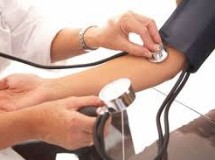It's time somebody stuck up for good old fat.
Ask most people what to avoid in your diet and the answer tends to come back the same across the board - FAT.
What about the difference between the fats that are actually essential to your health and those that damage your health? Instead of painting them all with the same brush, we need to take out the magnifying glass and become aware of what we are putting in our mouths.
In the interest of simplicity I'd like to limit this article to getting you to ask two questions: What kind of fat is it? Linoleic Acid (LA) and Alpha-Linoleic Acid (LNA) are Essential Fatty Acids (EFA's) and are called that for a reason - your body needs them, and does not produce them.
That means that you have to get them through your diet.
These healthy fats help your body carry out a whole host of functions, ranging from maintaining the integrity of your cells to improving oxygen transfer.
Saturated Fats (SaFA's) are getting more press nowadays - you must have seen the advert pouring a jug of fat down the sink and how it clogs the pipes, with the obvious parallel in your 'pipes'.
SaFA's can make your platelets more sticky, which can play a role in cardiovascular problems and should definitely not be consumed in excess.
Trans Fats are predominantly artificial (the small amounts that can occur in Nature are not what we are talking about here) and interfere with many of the same processes that EFA's help encourage.
The Trans Fats we are most familiar with are those that are found in margarines or shortenings but they are smuggled into all kinds of convenience food and often it's hard to tell from the label.
The process twists the molecules around and creates something that our bodies don't quite know how to handle.
These guys negatively affect the permeability of your cells and are inferior substitutes for healthier fats that would have been ideal building blocks for your body.
The molecular randomization makes for a uniform texture and longer shelf life of your snack and is perfect for the manufacturer, but at the expense of the nutrition of the consumer.
What has happened to these fats between start and finish? Clearly it's best to avoid Trans Fats as much as possible (they've already been banned in Denmark and have to be declared on US packaging).
SaFA's in excess also have their place on 'the naughty step'.
But even healthy EFA's need to be scrutinized in a little more detail.
While being vital to your health, EFA's are pretty fragile and breakdown in response to exposure to heat, light, and air.
That's why it's important to get them fresh and keep them in an opaque container.
These are also important considerations when buying foods that claim to have these nutrients added to them.
Ask yourself: 'Even though they may have added EFA's to this product at some point, have those EFA's been exposed to heat, light, or air on the journey to me, and therefore damaged so they are no longer actually so healthy any more?' I hope that next time you go shopping you will ask yourself what kind of fat is in what you are choosing to eat, and whether any processing the food has been through may have stripped the goodness from any original healthy fats.
Ask most people what to avoid in your diet and the answer tends to come back the same across the board - FAT.
What about the difference between the fats that are actually essential to your health and those that damage your health? Instead of painting them all with the same brush, we need to take out the magnifying glass and become aware of what we are putting in our mouths.
In the interest of simplicity I'd like to limit this article to getting you to ask two questions: What kind of fat is it? Linoleic Acid (LA) and Alpha-Linoleic Acid (LNA) are Essential Fatty Acids (EFA's) and are called that for a reason - your body needs them, and does not produce them.
That means that you have to get them through your diet.
These healthy fats help your body carry out a whole host of functions, ranging from maintaining the integrity of your cells to improving oxygen transfer.
Saturated Fats (SaFA's) are getting more press nowadays - you must have seen the advert pouring a jug of fat down the sink and how it clogs the pipes, with the obvious parallel in your 'pipes'.
SaFA's can make your platelets more sticky, which can play a role in cardiovascular problems and should definitely not be consumed in excess.
Trans Fats are predominantly artificial (the small amounts that can occur in Nature are not what we are talking about here) and interfere with many of the same processes that EFA's help encourage.
The Trans Fats we are most familiar with are those that are found in margarines or shortenings but they are smuggled into all kinds of convenience food and often it's hard to tell from the label.
The process twists the molecules around and creates something that our bodies don't quite know how to handle.
These guys negatively affect the permeability of your cells and are inferior substitutes for healthier fats that would have been ideal building blocks for your body.
The molecular randomization makes for a uniform texture and longer shelf life of your snack and is perfect for the manufacturer, but at the expense of the nutrition of the consumer.
What has happened to these fats between start and finish? Clearly it's best to avoid Trans Fats as much as possible (they've already been banned in Denmark and have to be declared on US packaging).
SaFA's in excess also have their place on 'the naughty step'.
But even healthy EFA's need to be scrutinized in a little more detail.
While being vital to your health, EFA's are pretty fragile and breakdown in response to exposure to heat, light, and air.
That's why it's important to get them fresh and keep them in an opaque container.
These are also important considerations when buying foods that claim to have these nutrients added to them.
Ask yourself: 'Even though they may have added EFA's to this product at some point, have those EFA's been exposed to heat, light, or air on the journey to me, and therefore damaged so they are no longer actually so healthy any more?' I hope that next time you go shopping you will ask yourself what kind of fat is in what you are choosing to eat, and whether any processing the food has been through may have stripped the goodness from any original healthy fats.
SHARE





































